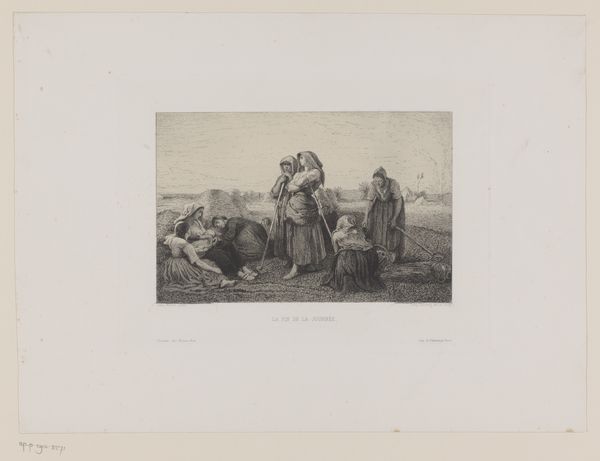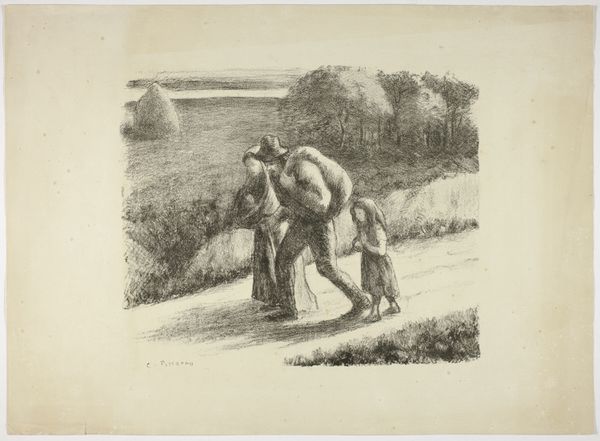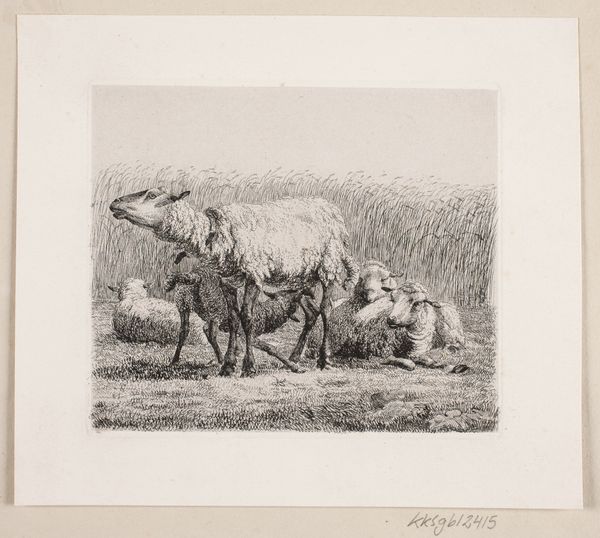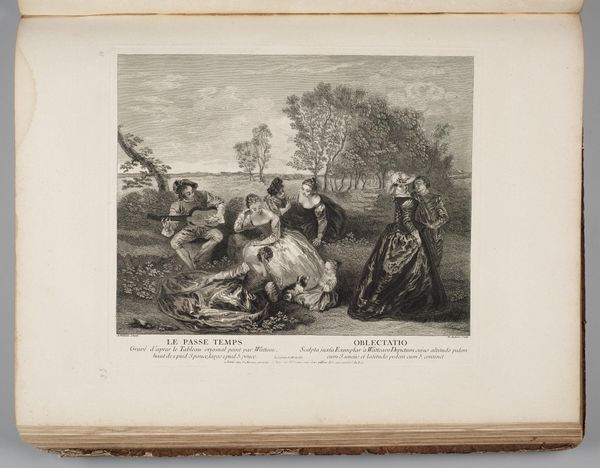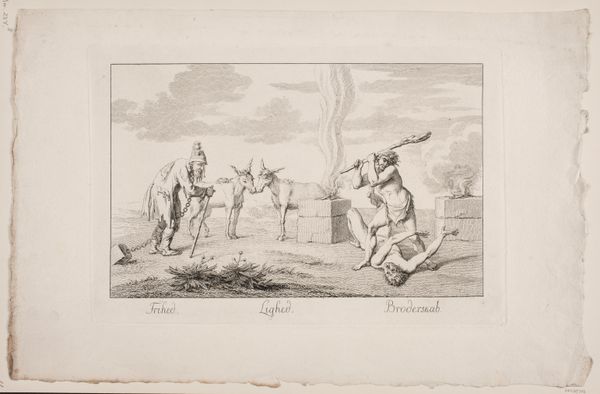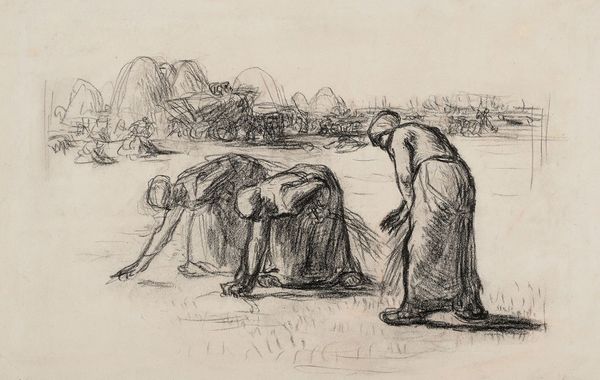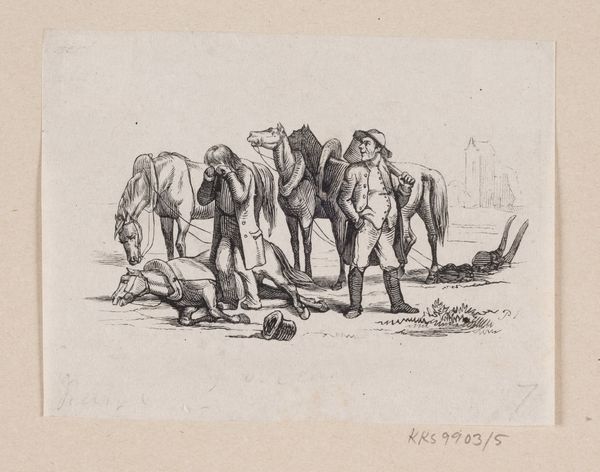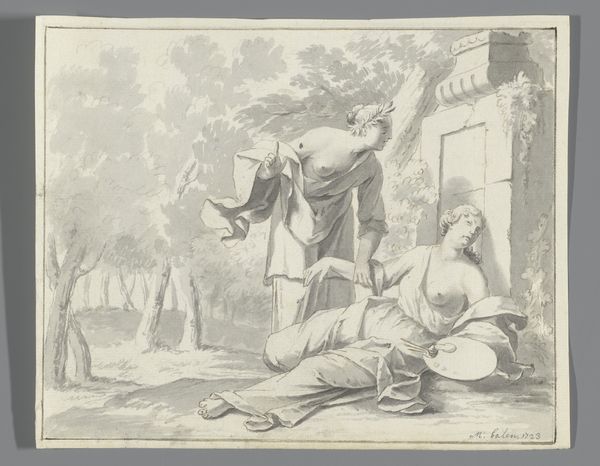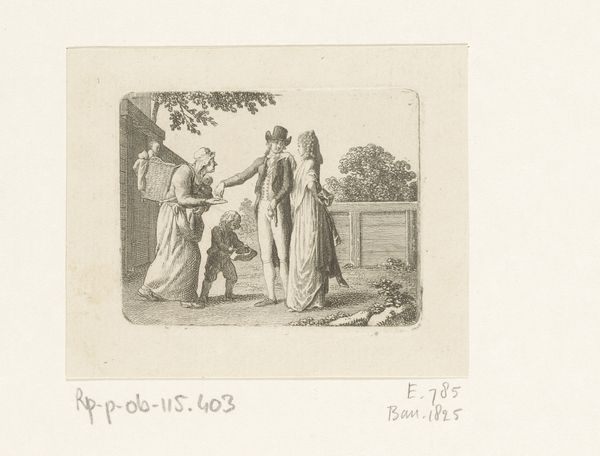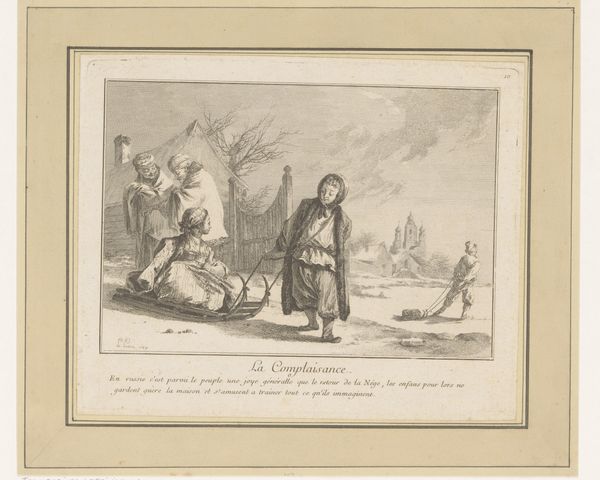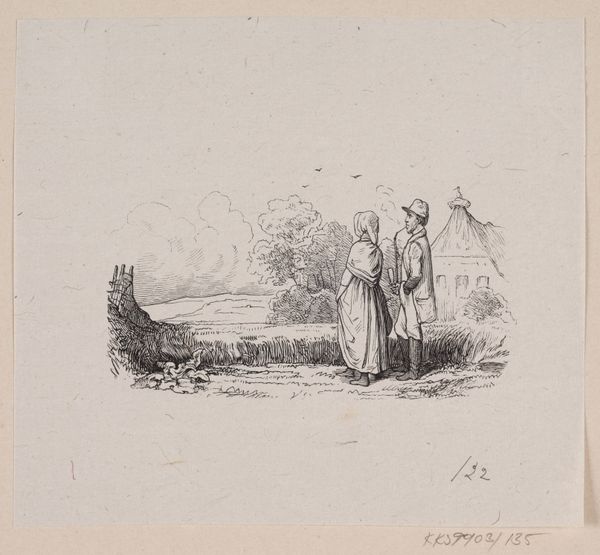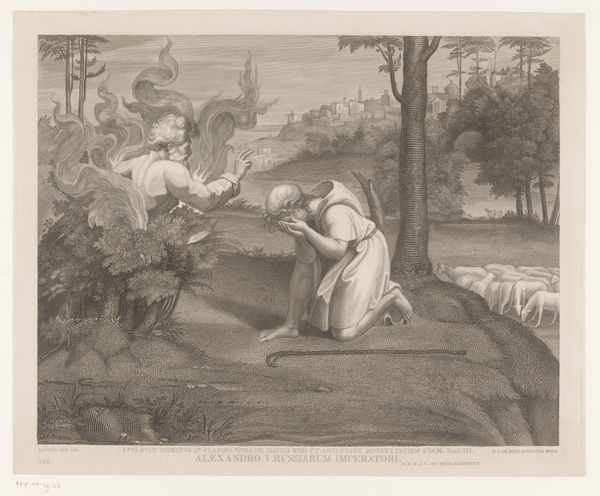
graphic-art, print, etching, woodcut
#
graphic-art
# print
#
etching
#
landscape
#
pencil drawing
#
woodcut
#
genre-painting
#
realism
Dimensions: 158 mm (height) x 230 mm (width) (bladmaal), 86 mm (height) x 135 mm (width) (billedmaal)
Editor: Here we have "Des glaneuses," or "The Gleaners," created as a woodcut in 1923 by S. Aagren. It’s a scene of women working in a field, and the stark black and white tones create a real sense of hardship, almost like a documentary snapshot from the past. What are your impressions of it? Curator: You know, it reminds me of those old photographs my grandmother used to keep, faces worn by sun and work, dignity etched into every line. This print, with its deliberate strokes, isn’t just showing us gleaners; it’s showing us the quiet poetry of labor. Notice how their bodies create this beautiful, curving rhythm across the composition? They’re almost dancing, even in their toil. What do you make of the scale here? The vast field versus their small figures? Editor: It makes them seem... insignificant, almost swallowed by the landscape, highlighting their vulnerability. Is that intentional? Curator: Perhaps. Or perhaps it's showing their resilience against such immensity? Remember, "gleaning" has this history, this story of survival and making do. These women weren't just collecting leftover grains; they were collecting life, one handful at a time. Look closely at their clothes; can you almost *feel* the coarse fabric against the skin? Editor: I hadn’t thought about the texture, but now I see it. It does bring it to life. I guess I focused too much on the 'hardship' aspect. Curator: It's both, isn’t it? The hardship *and* the quiet strength. Art, at its best, holds those complexities together. A single print, a universe of stories. Editor: That's given me a totally different way to look at it. I really appreciate that!
Comments
No comments
Be the first to comment and join the conversation on the ultimate creative platform.
